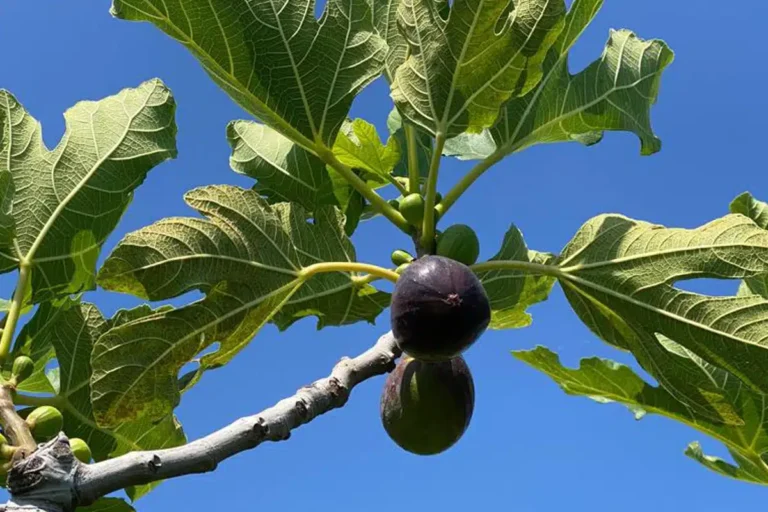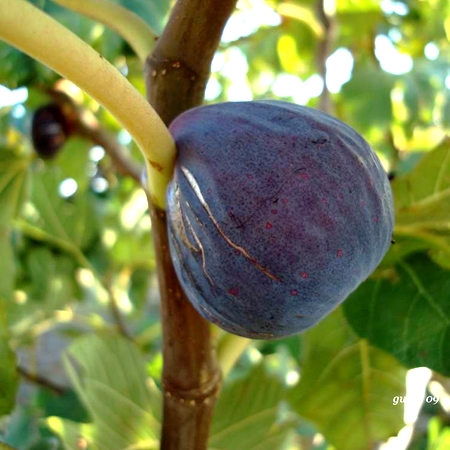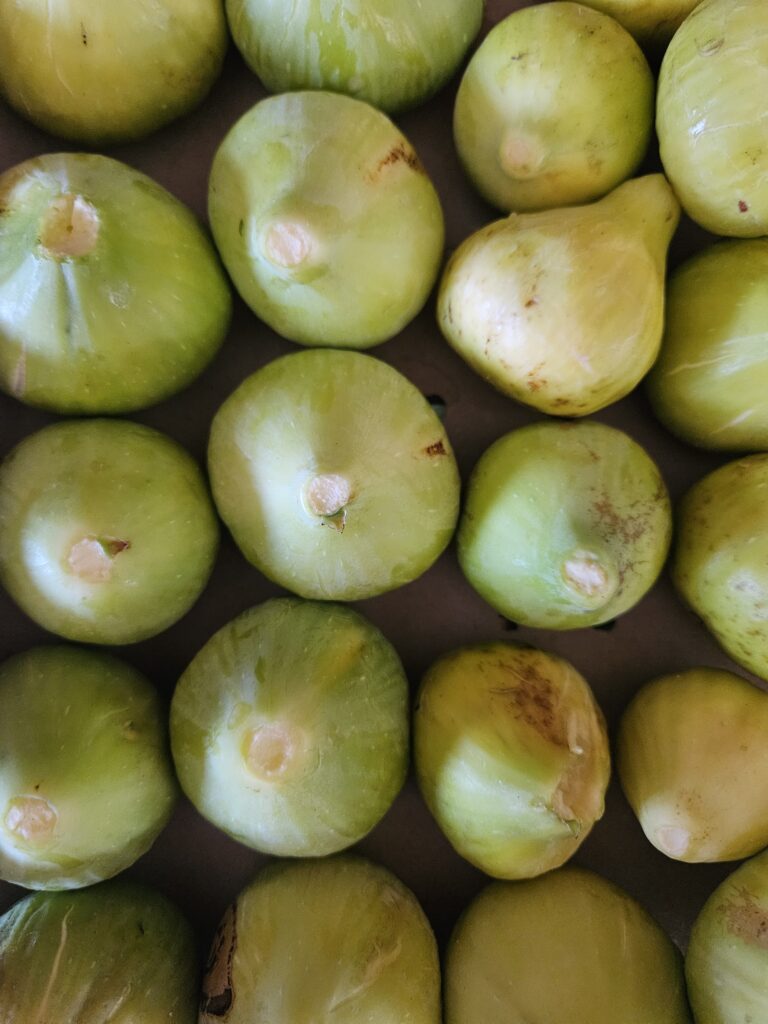BROGIOTTO FIG TREE
In local dialect “Lu Ficu”
Ficus carica L.
Moraceae
🍇 THE BROGIOTTO FIG, ONE OF THE MOST REFINED VARIETIES
The Brogiotto fig is one of the most renowned and refined varieties thanks to its sweet and fragrant pulp. It is very common especially in Italy and France, and it is known for its rounded shape, the thick peel and the deep red-violet pulp.

🏛 STORY AND INTERESTING FACTS
📍 Ancient origins: the Brogiotto fig has been known for centuries in Italy and France. Its name might come from French Bruges, the city from which this variety is believed to have been imported.
📜 Historical mentions
✔️ It was already cultivated during the Renaissance and appreciated in the Italian courts.
✔️ The botanist Costanzo Felici (16th century) described the Brogiotto fig as one of the finest varieties for the flavour and texture of its pulp.
🏛 Mythology and Art
✔️Generally, figs are very common in many artistic representations as symbols of fertility and abundance.
✔️In Tuscany, the Brogiotto fig is considered a fruit of rural tradition, and it is perfect with cheese, or dried for the winter.
Here is a comparative table between the Brogiotto Fig, the Turkish Black Fig, and the White Adriatic Fig, highlighting the main differences between these varieties.
|
|
Brogiotto Fig |
Black Bursa Fig |
White Adriatic Fig |
|
Shape |
Round, slightly flattened |
Shaped like an elongated drop |
Round, slightly elongated |
|
Peel |
Thick, wrinkled, dark purple or black |
Thin, smooth, black |
Thin, smooth, yellow-green or gold |
|
Pulp |
Thick, sweet and fragrant, purple-red |
Juicy, sweet, amber |
Fair, very sugary, delicate |
|
Ripening period |
End of summer (once per year) |
End of summer and autumn (twice per year) |
Summer (June-July) and autumn (twice per year) |
|
Texture |
Thick, not so juicy |
Softer and juicy |
Soft with thinner peel |
|
Use |
For fresh consumption, jams and dried |
Dried, fresh consumption |
For fresh consumption, desserts and jams |
|
Resistance |
Medium-high resistance, it tolerates drought |
Medium-high resistance, weather resistant |
More fragile, not suitable for rain and humidity |
|
Cultivation areas |
Central Italy and France |
Turkey and southern Italy |
Southern Italy, Spain and Greece |



These contents were written and researched by the owners of the SiGi Agricultural Company in collaboration with the students of the Agricultural Technical Institute of Macerata.
If you would like to contribute to expanding the descriptions of these varieties, you can send an e-mail to info@agricolasigi.it
We launched the e-museum of ancient fruits thanks to a social farming project of the Marche region. The translation is by komalingua
This project enabled five young people with cognitive impairments, aged 20 to 25, to work on the farm. They were selected by psychologists and Anffas social workers, supported by the professional educator Il Faro and supervised by UniMc researchers. Coldiretti Marche handled communication and distribution.
This unique and challenging project led to the creation of both a physical and virtual museum of ancient fruits in SiGi’s garden. This is not only a great honor but also a significant commitment that we are willing to continue with everyone’s support. You can contribute to our projects by choosing our products, or you can do so directly here:
